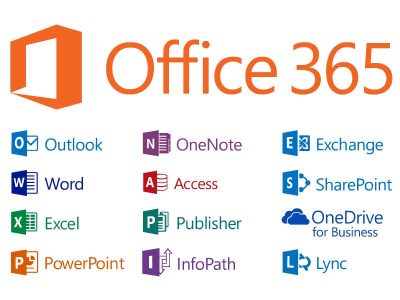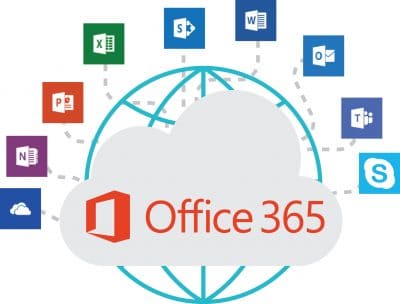Microsoft 365 is a subscription facility that ensures that you always have the most up-to-date versions of Microsoft’s contemporary productivity products available. Microsoft 365 plans are available for homebased and personal use, as well as for small and midsize companies. Big corporations, educational institutions, and non-profit organizations.
Office desktop applications:
Such as Word, PowerPoint, and Excel are include in Microsoft 365 subscriptions for the home and personal use, as with other Microsoft services such as Skype. Additional online storage is include, as are cloud-connect capabilities that allow you to collaborate on documents in real time.
With a subscription, you’ll always get the most up-to-date features, fixes, and security updates, as well as unlimited technical assistance at no additional charge. Monthly or annual payments are also options for paying for your membership service. The Microsoft 365 Family plan also allows you to share your membership with up to six members of your domestic and use your applications on as many PCs, Macs, tablets, and phones as you like.
Microsoft Office is a collection of tools that includes the well-known Outlook, Word, Excel, and PowerPoint applications. However, depending on where Office was download from and which installer was use, the version of Office and the functionality accessible inside those applications may differ significantly. If it helps, I’ll refer to them as either the Office 365 version (which has just been rebrand – more on that below) or the Office 2019 edition for the purpose of consistency.
Office 365 Pro Plus is now known as Office 365 Business.
Microsoft change Office 365 for SMB to Microsoft 365 on April 21, 2020, effective immediately. Microsoft has also change the name of the online version of Office that is include with certain SKUs of this service from Office 365 Pro Plus to Microsoft 365 Apps. This is the first period that Microsoft has done so. Office 365 Pro Plus is currently refer to as Microsoft 365 Apps for enterprise or Microsoft 365 Apps for business, rather as Office 365 Pro Plus.
It is important to note for the purposes of this article that regardless of the Microsoft 365 Apps edition, which can be either “for enterprise” or “for business,” this version of office is also refer to as the “click to run” version of office because it contains the Office applications Outlook, Word, Excel, PowerPoint and others. I’ll refer to it as Microsoft 365 Apps for the remainder of this post, while also reminding you of the previous moniker in order to keep confusion to a bare minimum.

What is the significance of a name?
Office 365 Pro Plus and Office 2019 have a similar sound to them, which makes it simple to mistake the two products. Microsoft 365 Apps and Office 2019 have a less identical sound to them, which makes it easier to distinguish between the two versions of Microsoft Office. Despite the fact that both versions of the software may be download and install on a user’s PC or Mac, the installer that comes with each of these versions is vastly different. In contrast to Office 2019, Microsoft 365 Apps is install using the Click-to-Run technology, while Office 2019 is deploy via the Windows Installer technology (MSI).
Each installer has a unique approach to dealing with various versions of Office. Major versions of Office are available as MSI downloads, and include editions such as Office 2013, Office 2016, and Office 2019. MSI versions of Office are licensed via Volume Licensing and are perpetual licenses. The term “perpetual licensing” refers to the fact that once you have license a product, such as Office 2013, you own it in perpetuity and will continue to get security patches and upgrades for that version of Office, particularly Office 2013, until the product’s support lifetime is through.
Unlike other cloud computing services:
Microsoft 365 plans for businesses, schools, and non-profits include fully install desktop applications. However, Microsoft also provides basic plans that feature online versions of Microsoft Office as well as file storage and email services. You pick what is most real for you:
A small company, an enterprise, a school, or a non-profit organization. As a one-time purchase, Office 2019 provides access to Office applications for a single machine for a fix price up front, saving you money over time. Purchases are accessible for both PCs and Macs as one-time purchases. However, there are no promotion options available, which means that if you want to update to the next major version, you’ll have to pay full price for the privilege of doing so.
Which version of Microsoft Office is best suit to your needs?
If you’re searching for the finest productivity applications, chances are you’ve come across Microsoft Office at some point. This office software package has been around for a long time, and it has remain essentially unchanged despite the changing requirements of businesses. While there are many Microsoft Office alternatives available, many companies continue to rely on Office as their primary tool for getting work done efficiently.
But one significant development that has occur in Office in recent years is the fact that you may now select between Microsoft 365 and Microsoft Office 2019. Microsoft 365 is a subscription-base service that includes improve cloud integration as well as all of the most recent software upgrades. Office 2019 is a one-time purchase that, in many instances, is less expensive than Office 2016, but it does not include any updates. As a result, which version of Microsoft Office is most appropriate for you? In this article, we’ll go through the differences and similarities between Microsoft 365 and Office 2019, in order to help you determine which is best for your needs.
Features
The most significant distinction between Microsoft 365 and Office 2019 is the manner in which they link to the cloud. Access to OneDrive, Microsoft’s cloud-base storage service. Is included with both suites. However, Office 2019 does not include any storage space in OneDrive. And you do not have access to the online versions of popular applications. Like as Word, Excel, and PowerPoint when you install it. Microsoft 365, on the other hand, offers 1 TB of free storage space. As well as the ability to modify all of your files remotely.
Despite the fact that Office 2019 does not function well in the cloud. You may still edit files on the move by using mobile applications for iOS and Android devices. Although this is far from easy if you do not subscribe to OneDrive storage. You will still have to manually move your data across devices if you do not do so. With Microsoft 365. You can quickly sync your data across many devices using the OneDrive online storage service.

Performance
The desktop versions of Microsoft’s Office applications should operate. Almost identically across Office 2019 and Microsoft 365 if you’re running the desktop versions of the software on your computer. For the time being, the desktop applications for both services are almost identical.
It is possible that this may change in the future since Microsoft 365. Customers will get automatic upgrades and Office 2019 will remain unchanged. One of the most vital belongings to consider when choosing between Microsoft 365. And Office 2019 for companies is the operating system that your company is presently using. Even however Microsoft plans to end support for Windows 7 in 2023. Microsoft 365 may be used on Windows operating systems going back to that version of the OS.
Three-way comparison between Microsoft 365 and Office 2019.
In contrast to Office 2019, Microsoft 365 updates are installed automatically, while patches for Office 2019 must be installed manually. While Office 2019 is still in its early stages. Microsoft has already announced intentions to phase it out over the next several years. In a recent announcement, Microsoft said that extended support for Office 2019 would be discontinued in 2025.
After then, there will be no further security updates provided by Microsoft (although users can continue to use the apps). Meanwhile, Microsoft provides very limit technical support for Microsoft Office 2019 (see below). The package includes installation assistance, but not assistance with any problems that may occur while using the productivity applications. Microsoft 365, on the other hand, includes unlimit email assistance for the duration of your subscription.
Additionally, you will discover that the majority of Microsoft’s online documentation is focus on Microsoft 365 rather than Office 2019. It is possible that this could create issues for Office 2019. Customers in the future when new features are introduce and the platforms diverge.
Pricing and payment options
Individual licenses for Microsoft 365 are available for purchase for $69.99 per year. The licensing choices for companies are many and include the following. However, it does not contain desktop versions of Word, Excel, Outlook, or PowerPoint. The Basic plan charges $5 per user per month and is available only in English.
You’ll need a Standard subscription, which costs $12.50 per user per month, to utilize these desktop applications. An optional Premium plan, which costs $20 per user each month, includes Azure Information Protection, which provides enhance cybersecurity.
It costs $249.99 for the Home & Business version and $439.99 for the Professional edition to download and install Office 2019. Both packages include desktop versions of Microsoft Word. Excel, PowerPoint, and Outlook, with the Professional edition including Access. And Microsoft Publisher as optional downloads. It’s important to note that Office 2019 may only be install on a single PC.
Verdict
It is worthwhile for the vast majority of companies to make the switch to Microsoft 365. Giving your employees access to web-base applications. And 1 TB of free mist storage space per user may significantly improve productivity and cooperation inside your company. While the cost of a monthly subscription may mount up over time. The fact that Microsoft intends to phase out Office 2019. As early as 2025 makes it a little more difficult to justify. Given how quickly office software has evolve in recent years. We believe it is also worthwhile to be able to take advantage. Of new capabilities available via Microsoft 365 upgrades on a regular basis.








